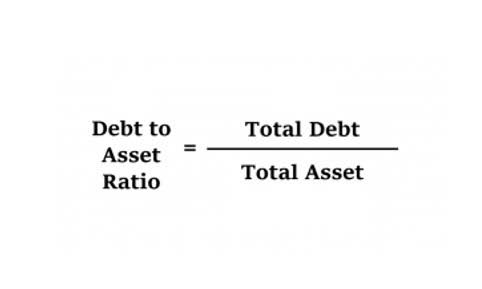Of course, merely increasing the number of outstanding shares is no guarantee of success; the company has to deliver consistent earnings growth as well. Companies typically issue shares when they raise capital through equity financing or when they exercise employee stock options (ESOs) or other financial instruments. Outstanding shares decrease if the company buys back its shares under a share repurchase program. In particular, the common stock line of the balance sheet will typically have a number that equals the par value of each share multiplied by the number of shares issued.
- Diluted EPS includes options, convertible securities, and warrants outstanding that can affect total shares outstanding when exercised.
- Also, the figure will change when other financial instruments, like employee stock options, are converted into shares.
- Generally, you won’t need to calculate this number yourself and it will be listed for you on a company’s 10-Q or 10-K filing.
- Watch this short video to quickly understand the main concepts covered in this guide, including what Earnings Per Share is, the formula for EPS, and an example of EPS calculation.
- When a company executes a stock split, the number of outstanding shares rises.
Our Services
Although this decreases liquidity due to fewer shares, it can deter short sellers by making it harder to borrow shares for short selling. The weighted average shares outstanding figure smooths out this variance, by simply averaging the share count across the reporting period. This is a figure calculated by the company itself; investors literally do not have how to calculate number of shares the access to the data required. The term outstanding shares refers to a company’s stock currently held by all its shareholders. Outstanding shares include share blocks held by institutional investors and restricted shares owned by the company’s officers and insiders. A company’s number of outstanding shares is not static and may fluctuate wildly over time.
Salary & Income Tax Calculators
Not only does this include the shares available to be bought and sold by the public, but also included in this number are the restricted shares held by institutional investors and company insiders. The number of outstanding shares is also in the capital section of a company’s annual report. This section provides the sum of the total authorized shares, the total number of shares outstanding, and the total floating shares. Conversely, a reverse stock split reduces the number of outstanding shares. Companies typically use reverse splits to increase their share price to meet minimum exchange listing requirements.
Misconceptions About Market Capitalization

However, just because a corporation is authorized to issue stock doesn’t mean that it has to issue all of those shares. Most of the time, corporations will tell investors how many shares of stock they’ve issued, but sometimes, it’s helpful to be able to calculate those numbers on your own. Below, you’ll find some tips on a couple of different calculation methods to determine the number of shares of stock a company has. The number is more valuable when analyzed against other companies in the industry, and when compared to the company’s share price (the P/E Ratio).

Ask Any Financial Question
- The focus of this calculation is to see only profit or loss generated from core operations on a normalized basis.
- The term “float” refers to the number of shares available to be traded by the public and excludes any shares held by company executives or the company’s treasury.
- Group 1 consists of 200,000 split shares that were effectively outstanding for the entire year.
- Austin specializes in the health industry but supports clients across multiple industries.
- Called dividend discount models (DDMs), they are based on the concept that a stock’s current price equals the sum total of all its future dividend payments (when discounted back to their present value).
- One key goal of the diluted share figure is to appropriately calculate earnings per share accounting for all of the potential shares out there, whether currently existing or underlying other instruments.
- Repurchasing shares is a more straightforward process for companies with large cash reserves.
It’s worth noting that a company’s basic number of shares outstanding can differ from its fully diluted number of shares. The fully diluted number of shares indicates how many outstanding shares there could potentially be if all existing equity instruments were converted into common stock. The number of shares outstanding can (and usually does) fluctuate over time. The number of shares outstanding increases if a company sells more shares to the public, splits its stock, or employees redeem stock options.
- Weighted average shares outstanding refers to the number of shares of a company calculated after adjusting for changes in the share capital over a reporting period.
- Several factors can cause a company’s number of outstanding shares to rise or fall, with one of the most common being stock splits.
- And so, for a loss-making company, potentially dilutive shares can be excluded if they are “anti-dilutive”.
- Restricted stock are shares that are owned by company insiders, employees and key shareholders that are under temporary restriction, and therefore cannot be traded.
- Outstanding shares differ from treasury shares, which are the shares held by the company itself and which cannot be sold in the open market.
How confident are you in your long term financial plan?

This shortcut is used to adjust the average outstanding shares for earlier years covered by comparative statements. Consequently, the generally accepted accounting principles (GAAP) require the use of an average number of shares outstanding as the starting point for all denominators. Even though market cap measures the cost of buying all of a company’s shares, it does not determine the amount the company would cost to acquire in a merger transaction. Although it is often used to describe a company (e.g., large cap vs. small cap), market cap does not measure the equity value of a company. Stocks that have a smaller float are generally more volatile than stocks with a larger float due to their limited availability. Investors may demand more shares than are available, resulting in the price of the shares increasing.
For a loss-making company, the diluted share count will reduce loss per share, since the net loss is being spread over a larger amount of shares. The shares available to investors on the open market are commonly called the float. In general, stocks with low floats will experience more volatility than those with large floats. Other companies may explicitly list their outstanding shares as a line item in the equity section of their balance sheet.
Floating shares serve as a good representation of the company’s active shares or share turnover among various investors in the market, excluding parties holding substantial portions of equity. Therefore, if a company owns any https://www.bookstime.com/articles/bookkeeping-san-francisco diluting securities, that would indicate a potential increase in the number of shares outstanding in the future. Authorized shares are the maximum number of shares a company can issue, as specified in its corporate charter.
While there seems to be an abundance of positive effects through a share repurchase program, there are still some things that businesses should keep in mind before implementing one. As a result, the company may initiate a repurchase program to buy back some of its stock. This by no means implies that increasing the number of these shares leads to guaranteed success. First, the company has to do its job and have strong, consistent financial performance, delivering constant earnings growth. Lowering the number of these shares may inhibit liquidity, but it may also deter short sellers from the stock because of the difficulty of borrowing the shares.